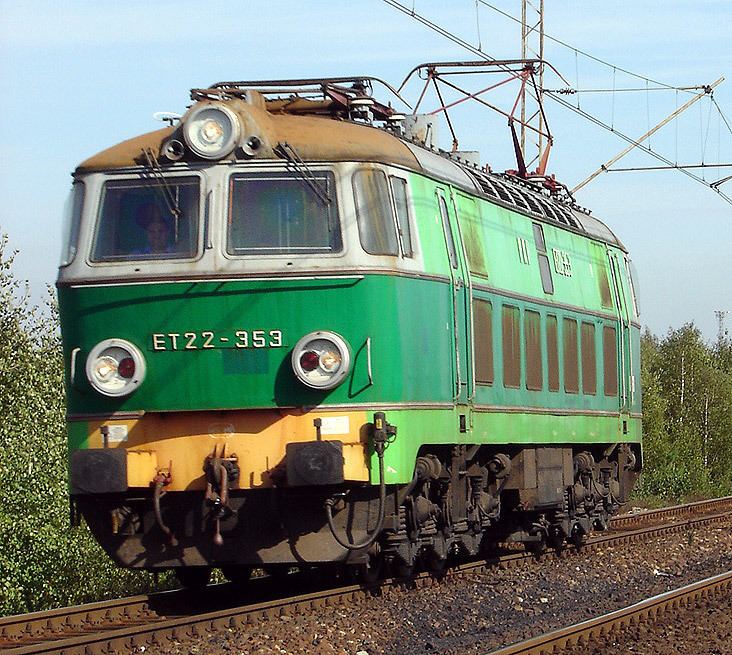 | ||
PKP classification system (Polish locomotive designation) is a system of assigning letters and numbers to series and individual locomotives used by the PKP - Polish national railroad operator.
Contents
- Electric and diesel locomotives
- First letter
- Locomotives
- Electric multiple units
- Diesel railcars and multiple units
- Electric locomotives
- Diesel locomotives
- Steam locomotives
- Last letter
- Middle letter
- Number
- Serial numbers
- First number
- Letter
- Second number
- An example
- References
The system was introduced for steam stock by the Ministry of Railways on 3 November 1922, shortly after Poland regained her independence (1918), when the Polish railroads inherited a variety of German, Austrian and Russian steam locomotives, each with its own type convention. It was put into use in 1923–1926 years. The adopted solution allows telling the locomotive type (passenger/freight/mixed), wheel arrangement, origin and some other information from the type designation. After World War II a similar system was also adapted for diesel and electric locomotives.
Electric and diesel locomotives
In case of electric and diesel locomotives, and multiple units, a designation consists of two capital letter and two digits, without a space between letters and digits. The first letter E or S indicates a kind of traction (electric or diesel), the second letter indicates a locomotive purpose. Digits mark subsequent classes, and their ranges also carry an additional information on construction features. Some railcar classes have three digits.
First letter
Locomotives
Electric multiple units
Diesel railcars and multiple units
Electric locomotives
In the case of electric and diesel locomotives consisting of two cars, the letters A and B were added after the serial number for each car but the number is still the same for both the cars.
Electric multiple units
Every car in a multiple unit is further designated by its own suffix:
If there are more than one car of a given designation in a unit, they are further identified with letter a or b. For example a typical 3-car EMU class EN57 consists of the following cars:
Another 3-car EMU, class EW58, consists of the following cars:
Example of a single car's designation: EN57-830ra.
Diesel locomotives
Diesel railcars and multiple units
Steam locomotives
Designations of standard gauge PKP steam locomotives consist of two letters (or three letters in case of tank locomotives) and a number written directly behind the letters. Designations of narrow gauge locomotives follow other rules.
First letter
The upper case letter means:
Last letter
Last letter (lower case) indicates the wheel arrangement, in increasing order of the number of driving axles.
Middle letter
In the case of tank engines, the letters designating the type of engine and the wheel arrangement are separated by a K (upper case). Thus TKt48 is a 2-8-2T tank locomotive of Polish design introduced in 1948.
Number
Serial numbers
Following the letters and numbers described above, the serial number of each individual locomotive is stated. This consists of several digits, separated from the type designation characters by a dash.
First number
Letter
Second number
An example
A tender numbered 22D23 can carry up to 22 m3 of water, has four axles, and its construction was approved in 1923.
